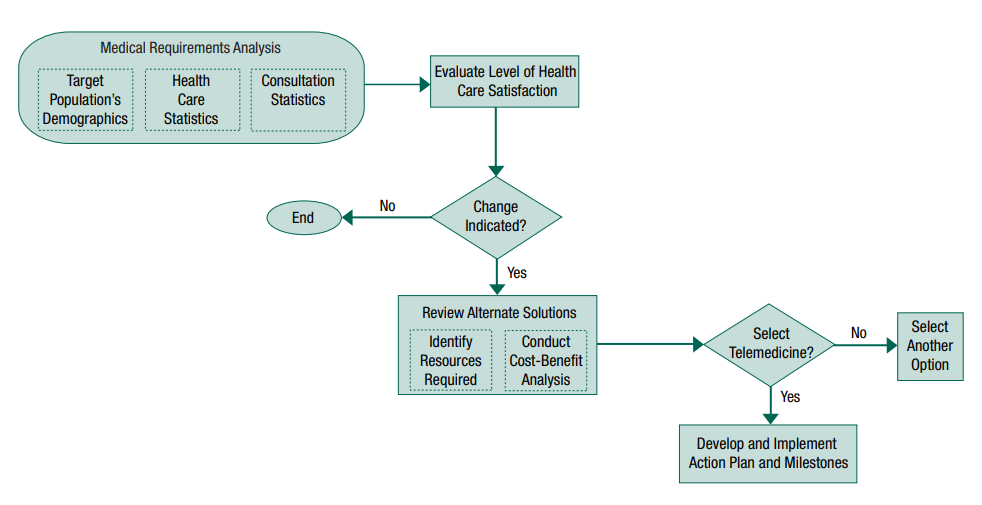According to a paper from the National Institute of Justice (2002), when implementing telemedicine in prisons there are 4 key steps to follow. And although this outline was originally published 2 decades ago, the message still holds. Of course, due to the widespread use of telemedicine and technology in general for many industries, these steps may be substantially more relaxed in today’s world.

Step 1: Conduct a medical requirements analysis.
According to the National Institute of Justice (2002), the guide we will be referencing in this article states that when deciding to implement a telehealth program in prisons, it’s best to start with an analysis of the prison demographic and overall needs.
Demographic
By collecting demographic data on the prison population, those in charge can accurately predict the best options when implementing new policies. This practice is commonly used in governments and corporations. This is a crucial first step when implementing a telehealth program, to determine where to allocate your budget and predict what features you require to meet your population’s needs.
Facility Health Statistics
Reviewing statistics in your healthcare facility will outline factors like your healthcare provider’s workload, demand from inmates, and how much outsourcing your facility requires. These 3 factors are common hurdles that telemedicine technology can substantially improve. Similar to your demographic analytics, this will help you determine what telemedicine features will help fill in gaps in your current healthcare offerings.
Consultation Statistics
During this stage, you will assess the quality and efficiency of your consultations. Some questions you need to answer are, what is the average duration of your consultations? How often do you have consultations? Are your in-person physicians meeting inmates’ medical needs? What are the costs associated with your consultations? Is there a substantial wait time for a consultation? Answering these questions can help break down some of the discreet costs of your healthcare system, and whether telemedicine in your prison can help reduce them.
Step 2: Evaluate the level of health care satisfaction within the target population.
When implementing telemedicine in prisons, statistically, your existing healthcare offerings may appear satisfactory. However, it’s valuable to record any flaws from the people using these services. A great place to start is to review previous comments and complaints, survey staff and inmates, and if possible, public records and media articles on experiences with these services.
These data types listed above can help you determine what areas of your services are working, and what areas telemedicine can help improve. After you have completed steps 1 and 2, you can determine what your goals and objectives are for your revised services.
Step 3: Review alternate solutions.
Once you have collected relevant data on your inmates, their medical needs, and the strengths and weaknesses of your healthcare services, you can then determine the best options available to you. With clearly defined objectives based on information gathered from steps 1 and 2, you will have a clear vision in mind regarding what needs you must address.
Some indicators that telemedicine may be a fit for your existing workflow are long wait times for patients, overworked providers, extensive travel to experts outside of your facility, or risk of contracting viruses. Implementing telemedicine in prisons helps to improve workflows, enhance collaboration with inmates’ family members and medical professionals, reduce costs and allow for 24/7 observation without a 1:1 patient sitter.
There is also the possibility that after conducting steps 1 and 2, you may conclude that telemedicine services won’t benefit your specific use cases and there are different shortfalls you need to address.
Step 4: Develop and implement an action plan and milestones.
After conducting steps 1 – 3, you should have an understanding of the main problems you need to solve and what telemedicine features stand out to you. By this stage, after consulting with several telehealth companies to determine which companies’ offerings and prices best align with your objectives, it’s ideal to plan out how you need to prepare to implement the telemedicine program in your prison.
Some questions you and your team need to answer are where will we be using and storing the devices? What additional medical devices do we require from this solution? Do we need to upgrade our existing technology to meet our objectives? How much training will our staff require before and after we install this technology? Do we need to make substantial modifications to our existing facility?
By answering these questions, you will be able to establish a timeline to guarantee to the integration of this telehealth technology goes as smoothly as possible. It will also give your staff sufficient time to train and prepare.
Telemedicine in Prisons: What are my Options?
Once you start your journey to implement telemedicine in your prison, you will realize that regardless of your specific needs, there are some features that are non-negotiables. Here are a few examples:
- HIPAA compliance
- High-quality audio-visual technology
- Customization abilities
- Seamless integration and deployment
When implementing new healthcare technology, you want to feel confident that it will benefit your existing workflow and meet your patient needs. Connect with a Telehealth Expert today to start your journey and find out why more than 4,000 providers choose VidyoHealth.
